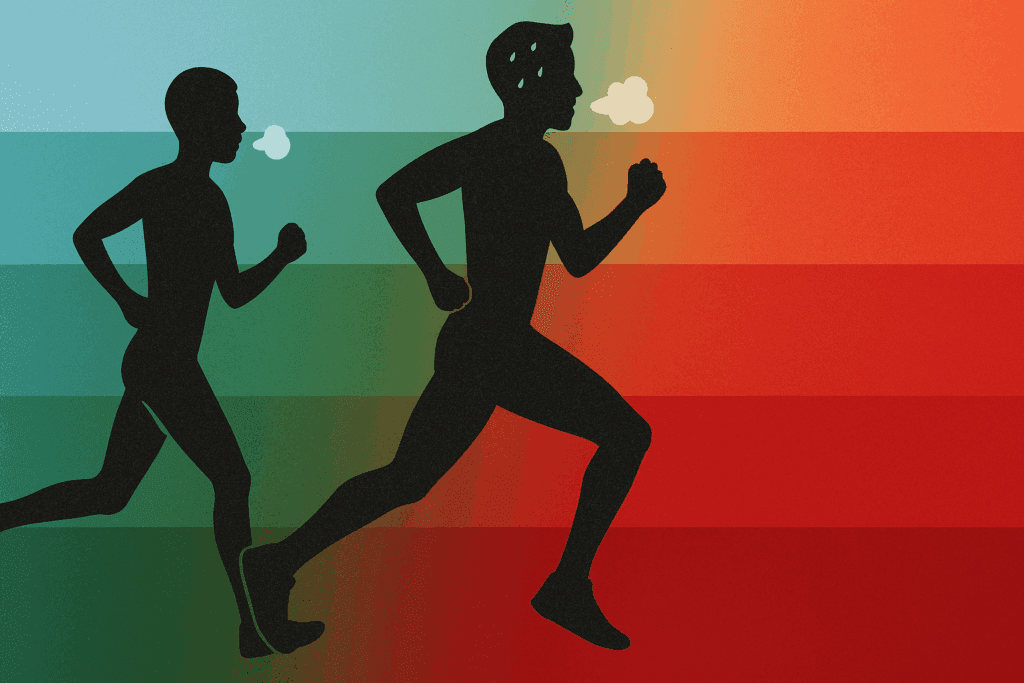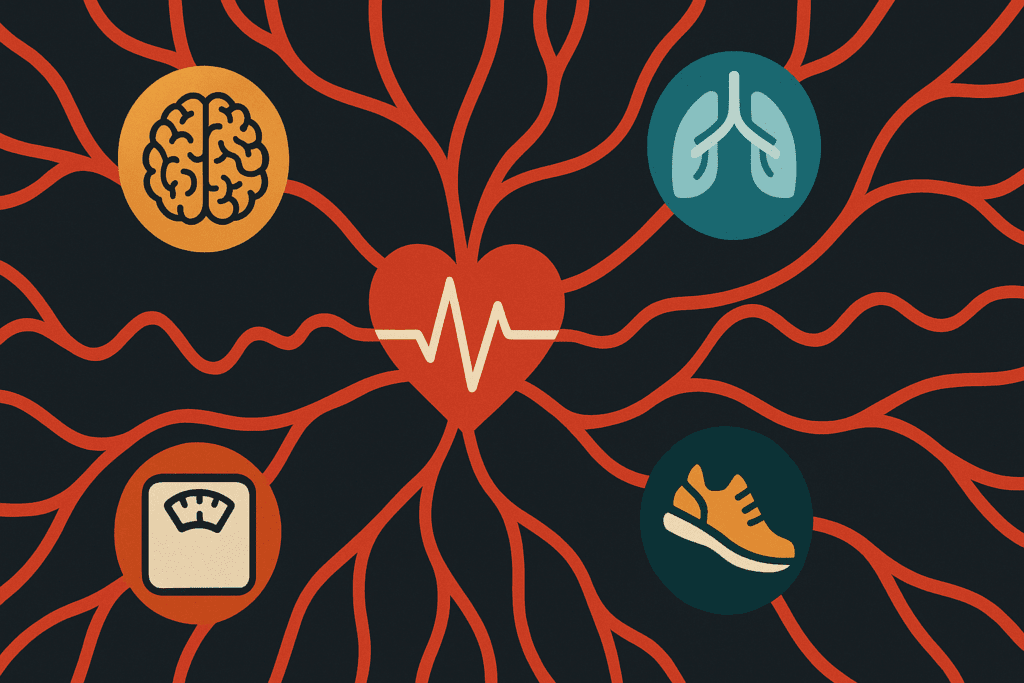Introduction: Why Heart Rate Zones Matter More Than Ever
In the modern fitness landscape, data-driven training has become the gold standard for achieving optimal results. Among the most accessible and effective tools is understanding and applying heart rate zones to tailor your cardio workouts. Whether you’re a seasoned athlete or someone just beginning their fitness journey, learning how to work out heart rate zones correctly allows you to train smarter—not just harder. By aligning your efforts with specific cardio zones, you can enhance endurance, improve fat metabolism, and support a healthier cardiovascular system.
As technology advances, more people are tapping into their workout heart rate zones using smart devices, yet many still don’t fully understand how to interpret or apply that data. This article will walk you through the science of heart rate training zones, how to determine them accurately, and how to use them to achieve goals like improved stamina and target heart rate for weight loss—all while staying grounded in medical accuracy and physiological evidence.
You may also like: Smart Nutrition Choices for a Healthier Lifestyle: What to Know About Whole Grain Rice and Whole Wheat Rice

Understanding Heart Rate Training Zones and Their Impact
Heart rate training zones represent structured ranges of cardiovascular effort, typically divided into five distinct levels. These zones are defined as percentages of your maximum heart rate (MHR), which is generally estimated using the formula: 220 minus your age. From light recovery efforts to intense sprints, each zone taps into a different metabolic pathway, making it vital to understand their unique benefits.
Training in the correct cardio heart rate zones can stimulate fat-burning enzymes, increase stroke volume, improve oxygen delivery, and boost endurance. For example, working in aerobic heart rate zones enhances your ability to sustain longer sessions with greater efficiency, while higher cardio workout zones can increase speed and anaerobic capacity. In this way, heart rate zone training provides an individualized blueprint that is far superior to one-size-fits-all fitness regimens.

Breaking Down the Five Core Exercise Heart Rate Zones
Each exercise heart rate zone serves a specific role in conditioning your body. Zone 1, which falls between 50–60% of your MHR, is ideal for warm-ups, cooldowns, and active recovery. It supports circulation and lymphatic drainage without taxing your cardiovascular system. Zone 2, ranging from 60–70% of MHR, is particularly valuable—it’s widely regarded as the optimal aerobic heart rate training zone for endurance development and fat oxidation.
Zone 3 (70–80%) introduces more intensity and is often used for tempo or steady-state runs. Here, you’ll blend aerobic and anaerobic efforts, enhancing your body’s efficiency at processing lactic acid. Zone 4 (80–90%) targets lactate threshold, pushing your limits and training your body to delay fatigue. Zone 5 (90–100%) is reserved for high-intensity intervals and peak output, essential for explosive performance but not sustainable for long durations. Knowing how to move strategically through these workout zones enhances both safety and results.
How to Determine Heart Rate Zones Without Guesswork
The most common method to calculate HR zones is using the 220-minus-age formula. While this is a simple starting point, it lacks precision for those with unique cardiovascular profiles. A more reliable strategy includes lab testing, such as VO2 max or lactate threshold assessments, but these may not be accessible to everyone. Fortunately, wearable devices now offer real-time feedback and estimates based on past workouts and recovery trends.
Apps that track cardio HR zones can also generate a chart of heart rate zones tailored to your personal metrics. Some fitness platforms automatically adjust your zones as your fitness improves, offering dynamic and personalized programming. Whether you use a chest strap or optical sensor, consistent tracking provides insights into how your body responds under different levels of stress and helps you determine the pulse rate to lose weight more effectively.

The Science of Zone 2: Why It’s the Gold Standard for Fat Loss and Endurance
Zone 2 heart rate by age calculations have become increasingly popular among endurance athletes, recreational runners, and even those focused primarily on fat loss. Typically calculated as 60–70% of your MHR, this aerobic exercise heart rate zone supports long-duration efforts without excessive fatigue. It’s where the body becomes more efficient at using fat for fuel, making it the best heart rate for weight loss over time.
Unlike high-intensity training, which burns more calories per minute but relies heavily on glycogen, Zone 2 encourages sustainable fat-burning and metabolic flexibility. Moreover, consistent work in this zone improves mitochondrial density and heart stroke volume, key drivers of cardiovascular health. For those asking, “What should my heart rate be to lose weight?” Zone 2 often provides the most consistent and realistic pathway to fat reduction without overwhelming stress on the joints or adrenal system.
Weight Loss and Heart Rate Zones: Strategic Synergy for Fat-Burning
There is a common misconception that higher intensity always equals greater fat loss. In reality, the maximum heart rate for weight loss is not necessarily the highest you can hit. It’s the fitness heart rate zone that you can sustain consistently while tapping into stored fat as your primary energy source. This typically aligns with the upper bounds of Zone 2 or the lower bounds of Zone 3.
While cardio training zones above 80% of MHR do contribute to calorie burn, they are not the most efficient for long-term fat metabolism. Additionally, working at too high an intensity too frequently can suppress immune function and increase injury risk. By focusing on the best heart rate for losing weight—which science often associates with moderate intensity—you can burn fat, preserve lean muscle, and maintain the energy needed for consistency.

Using Cardio Workout Zones to Boost Athletic Endurance
For endurance athletes, understanding aerobic zones is critical. Long sessions in cardio workout zones like Zone 2 increase mitochondrial function, strengthen capillaries, and improve your body’s capacity to metabolize fat and oxygen efficiently. By spending time in these aerobic heart rate zones, athletes build a strong base that allows them to handle more intense efforts with greater ease later in their training cycle.
Higher zones, especially Zone 3 and 4, are used strategically to simulate race conditions or prepare for high-pressure efforts. This progression ensures that you\u2019re not just building stamina but also preparing your cardiovascular system to withstand competition-level demands. Smart programming across your hr exercise zones ensures progressive overload, injury prevention, and maximized aerobic output.
Smart Recovery Through Heart Rate Monitoring
One of the most underutilized aspects of exercise zones is using them for recovery. Workout heart rate zones are not just for pushing limits; they also help you monitor how well your body is rebounding. Zone 1 and low Zone 2 sessions are excellent for enhancing parasympathetic nervous system activity, reducing cortisol, and supporting tissue repair.
By tracking time spent in these zones, you can prevent overtraining and improve heart rate variability (HRV), a key biomarker for nervous system recovery and resilience. Whether your focus is cardio hr zone training for peak performance or pulse rate to lose weight, rest days with guided zone work are essential for long-term success and hormonal balance.
Beginner to Advanced: Tailoring Your Zone-Based Training
Beginners often benefit most from working in lower cardio zones, particularly Zone 2, where they can build aerobic endurance without excessive fatigue. These sessions improve cardiovascular efficiency, foster habit formation, and reduce the risk of burnout. For beginners, heart rate-based training also helps remove the guesswork and prevent the all-too-common mistake of exercising too hard, too soon.
In contrast, advanced athletes use their knowledge of hr zones to periodize training blocks. This means alternating between aerobic zones, tempo efforts, and threshold workouts to peak at the right time. Whether you’re trying to figure out how to determine heart rate zones or dial in specific sessions to match race day demands, your approach should reflect your fitness level, goals, and ability to recover.

How to Figure Heart Rate Zones Using Wearable Tech
With so many smartwatches and fitness bands available today, understanding how to figure heart rate zones is easier than ever. Devices from brands like Garmin, Polar, Apple, and WHOOP provide real-time analysis of your bpm during workouts and rest. These tools not only help calculate hr zones, but also provide visual representations like a chart of heart rate zones based on your age and fitness data.
Most devices also factor in recovery, HRV, and stress levels to help guide you on which cardio training zones to target on a given day. This level of personalization transforms basic workouts into precision-based training protocols. Over time, the integration of this technology allows you to monitor trends and adjust your routine to remain aligned with the aerobic heart rate training zone that best suits your evolving physiology.

Frequently Asked Questions (FAQ): Optimizing Heart Rate Zones for Endurance and Weight Loss
1. How can I personalize heart rate training zones beyond age-based estimates?
While age-based calculations are a useful starting point, they don’t account for individual variations in fitness or cardiovascular conditioning. To personalize your heart rate zones, consider using a submaximal treadmill test or a talk test in combination with perceived exertion. For example, you can assess your aerobic threshold by identifying the highest heart rate at which you can still maintain a conversation comfortably. This gives you a clearer window into your aerobic heart rate training zone, which varies even among people of the same age. Wearables that track heart rate variability and recovery metrics can also help you refine how to determine heart rate zones based on daily physiological data rather than just chronological age.
2. What role does hydration play in maintaining accurate workout heart rate zones?
Hydration significantly affects cardiovascular efficiency and thermoregulation, both of which impact your heart rate. When you’re dehydrated, your blood volume decreases, making your heart work harder to pump oxygen, which can artificially elevate your bpm. This means that your cardio hr zone might appear higher than the effort you’re actually putting in, leading to misinterpretation of your workout data. Staying properly hydrated ensures that your readings within cardio heart rate zones are more reflective of actual exertion levels. If you train in a hot climate, your zone 2 heart rate by age may temporarily shift upward due to heat stress, even if your workload stays the same.
3. How can heart rate zones support cross-training for endurance athletes?
Heart rate zones are incredibly helpful when integrating cross-training activities like swimming, cycling, or rowing into your endurance program. By using consistent bpm targets across different modalities, you can maintain intensity in the correct exercise zones even when changing the type of movement. For example, spending time in your aerobic exercise heart rate zone during a low-impact swim session can improve endurance without overloading running-specific muscles. This diversity not only aids in recovery but also builds functional fitness by targeting different muscle groups while maintaining cardiovascular development. It allows athletes to maintain their fitness heart rate zones through less repetitive strain, reducing injury risk.
4. Are heart rate zones reliable during high-stress or poor sleep days?
Stress and lack of sleep both have profound effects on the autonomic nervous system, which governs heart rate responses. On days following poor rest, your resting heart rate may be elevated, and you may enter higher hr zones with less effort. This could distort the accuracy of your cardio training zones, leading to overtraining if not accounted for. Advanced wearables now adjust workout heart rate zones based on daily readiness or recovery status, offering dynamic feedback to prevent burnout. Listening to your body and reducing intensity when stress is high helps preserve long-term health and ensures your pulse rate to lose weight doesn’t backfire due to hormonal imbalance.
5. Can heart rate zone training help improve mental focus and reduce anxiety?
Yes, particularly workouts within the aerobic zones. Consistent training in your aerobic heart rate zone has been shown to promote parasympathetic nervous system activity, which aids relaxation and stress recovery. Moderate efforts that stay within the aerobic heart rate training zone can increase endorphin production without triggering the cortisol spike often seen with high-intensity training. This hormonal balance enhances mental clarity, lowers anxiety, and improves sleep quality over time. For those struggling with overstimulation or burnout, staying within appropriate hr exercise zones can foster both physical and psychological resilience.
6. How often should I reassess my heart rate training zones?
As your fitness improves, so do your cardiovascular efficiency and threshold levels, which means your zones will shift. Ideally, you should reassess your zones every six to eight weeks if you’re training consistently. Using a structured test like a time trial, or simply tracking how your perceived exertion aligns with heart rate over time, can help you recalculate hr zones accurately. Updating your chart of heart rate zones ensures that each cardio workout zone still reflects your current fitness level. Neglecting to adjust these benchmarks may lead to training at suboptimal intensities, limiting both fat loss and endurance gains.
7. Is heart rate zone training suitable for resistance workouts or circuit training?
While traditionally associated with endurance sports, heart rate zones can be applied to strength and circuit training for metabolic conditioning. During high-rep circuits or kettlebell flows, you can monitor your bpm to stay within targeted cardio zones for fat loss or endurance. These hybrid sessions often oscillate between aerobic and anaerobic thresholds, making them effective for improving overall conditioning. Using heart rate as a guide helps keep rest periods consistent and ensures your training aligns with desired intensity levels. For individuals focused on the best heart rate for weight loss, this approach offers both muscular and cardiovascular adaptation.
8. How do medications like beta-blockers impact my heart rate zones?
Beta-blockers and other medications that affect cardiovascular function can significantly alter your heart rate response to exercise. They may blunt the heart rate increase typically seen during exertion, making traditional bpm-based methods to calculate hr zones less effective. In such cases, relying on perceived exertion and breathing patterns becomes crucial. For these individuals, understanding how to work out heart rate zones based on subjective effort rather than numbers alone can be a safer and more reliable method. It’s also advisable to consult with a physician or exercise physiologist to develop tailored hr exercise zones under medical guidance.
9. What are emerging technologies that enhance heart rate zone training?
The rise of biometric wearables has ushered in a new era of precision training. Devices now offer real-time feedback on oxygen saturation, lactate thresholds, and recovery metrics, helping athletes refine how to figure heart rate zones beyond bpm alone. Some apps integrate AI-driven insights to suggest personalized workout adjustments based on sleep, HRV, and stress data. These technologies allow for dynamic recalibration of cardio workout zones, making training safer and more responsive. As machine learning becomes more embedded in fitness tech, expect even more tailored zone recommendations based on your unique biology.
10. How do cultural and environmental factors influence heart rate zone training?
Altitude, temperature, and even cultural lifestyle norms can influence your cardiovascular response to exercise. For instance, those living at higher altitudes may experience higher bpm at lower exertion levels due to reduced oxygen availability, temporarily altering their fitness heart rate zones. In hot climates, your cardio zones may also shift due to thermoregulation demands, requiring more conservative pacing. Additionally, cultures that emphasize walking or manual labor as part of daily life may show greater baseline aerobic efficiency, affecting how to determine heart rate zones for training. It’s important to contextualize your heart rate training zones within your unique environment for the most accurate application.
Conclusion: Heart Rate Zone Training as the Blueprint for Smarter Fitness
Understanding and applying heart rate zones is more than a performance tactic; it\u2019s a holistic approach to smarter, safer, and more effective training. Whether your aim is to improve stamina, shed body fat, or prepare for a competitive event, syncing your effort with the right exercise zones maximizes each session’s impact. As you continue refining your strategy, you’ll find that knowing how to work out heart rate zones—and using them with intention—empowers long-term consistency and results.
From calculating zone 2 heart rate by age to using wearables to fine-tune your recovery days, the tools and knowledge are at your fingertips. The most successful fitness plans aren’t necessarily the hardest; they’re the ones that align with your goals, respect your body’s signals, and leverage insights from heart rate training zones to guide every step. Ultimately, learning how to optimize your cardio zones puts you in control of your performance and well-being, creating a foundation for lasting health and achievement.
Was this article helpful? Don’t let it stop with you. Share it right now with someone who needs to see it—whether it’s a friend, a colleague, or your whole network. And if staying ahead on this topic matters to you, subscribe to this publication for the most up-to-date information. You’ll get the latest insights delivered straight to you—no searching, no missing out.

